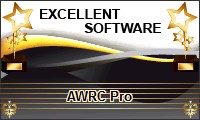Vista FAQ
In this page, when we mention Windows Vista the same answers still apply in full to Windows 7, Windows Server 2008/2008R2, Windows 8.x, Windows Server 2012/2012R2, Windows Server 2016 and Windows 10.
Q: What versions of Vista are supported by Remote Commander
A: You can install Remote Commander on any edition of Windows Vista and later, and you can connect to computers running any edition of these operating systems.
Q: Does Remote Commander require Administrator privileges?
A: You do not need Administrator privileges on the machine where you install Remote Commander – you can launch and run the software as a Standard User.
However, “by default”, you need to be a Real Administrator on the remote Vista machine for the connection to succeed because, “by default”, Vista does not allow Filtered Administrators to connect through the Administrative shares (C$, ADMIN$, etc.). You can also connect as a Filtered Administrator by changing a single Registry key ( see below ).
Note: In Vista there are 2 classes of Administrators: Filtered Administrators and Real Administrators. The built-in Administrator account is set to be a Real Administrator account. Within a domain, Domain Administrators are as well set to be Real Administrators. In Vista, Real Administrators, behave like traditional Administrators did in previous Windows versions.
Q: How do I enable the Real Administrator Account on a Vista machine?
A: Proceed as follows (see also next question):
- Click Start, then type secpol.msc in the Search box and click Enter.
- In the left pane, choose Local Policies/Security Options.
- Set Accounts: Administrator account status to Enabled.
- Set User Account Control: Admin Approval Mode for the Built-in Administrator account to Disabled.
Q: How do I enable the Real Administrator Account on Vista Home Premium and Starter editions?
A: Proceed as follows:
- Click Start, and then type cmd in the Start Search box.
- In the search results list, right-click Command Prompt, and then click Run as Administrator.
- When you are prompted by User Account Control, click Continue.
- At the command prompt, type net user administrator /active:yes, and then press <enter>.
- Type net user administrator <Password>, and then press <enter>.
Note: Please replace the <Password> tag with the passwords which you want to set to the administrator account. - Type exit, and then press <enter>.
Q: Is it possible for Filtered Administrators to connect without disabling UAC (User Account Control) on the remote machine?
A: Yes, all you need is change (or add, if is not there, then change) a single key value in the Registry of the remote computer.
- Click Start , then type regedit.exe in the Search box and <enter>.
- Browse to HKEY_LOCAL_MACHINE\ SOFTWARE\ Microsoft\ Windows\ CurrentVersion\ Policies\ System
- If it is not there, enter a new DWORD Value named LocalAccountTokenFilterPolicy
- Set Value data of LocalAccountTokenFilterPolicy to 1
That’s all.
Q: Why am I unable to connect to other remote computers?
A: Either within a local area network or across the Internet, Remote Commander requires Microsoft Networks to be operative – Client for Microsoft Networks installed on both local and remote machines and File and Printer sharing enabled at least on the remote machine.
Also access is only possible within the classical sharing and security model for local accounts. This is enabled from Control Panel / Administrative Tools / Local Security Policy / Local Policies / Security Options / Network access: Classic – local users authenticate as themselves. You can obtain the same result from Windows Explorer / Tools / Folder Options / View and uncheck Use Sharing Wizard (Recommended). This will revert you to the classical model as well.
Q: Why am I unable to connect to some Vista and later computers?
A: If, within Active Directory, you can’t connect to a remote workstation, despite complying with all other requirements, there are several possibilities:
1- If you are logged into the workstation with a built-in account (i.e., either a local User or local Administrator account), we have not found issues connecting to any workstation in the domain.
2- If you are logged into the workstation as a Domain User or Domain Administrator, enter in the User Name box “RemoteWorkstationName\Administrator”. Another alternative is to enter “Domain\DomainAdministratorAccount” or simply DomainAdministratorAccount in the User Name box.
3- In a small number of cases, for no clear reason, it is necessary to launch Remote Commander elevated or “runAs” with a Domain Administrator account.
If you are in a Workgroup and want to connect to a computer within Active Directory that has not joined the Domain, connect by entering “RemoteWorkstationName\Administrator” in the User Name box.
If you are in a Workgroup and want to connect to a computer within Active Directory that has joined the Domain, you can connect either by entering “RemoteWorkstationName\Administrator” or “Domain\DomainAdministratorAccount” in the User Name box.
Q: Can DEP (Data Execution Prevention) cause connection failures?
A: We are not aware of any problems with AWRC.
Q: How can I produce Ctrl+Alt+Del to logon to a remote Vista machine?
A: You can produce Ctrl+Alt+Del by pressing the CAD button on the Desktop tab.
















